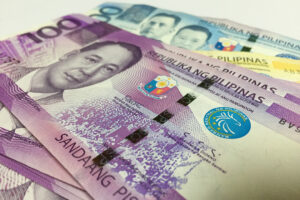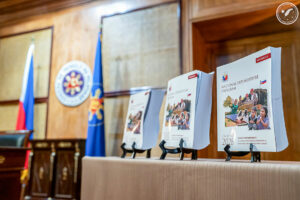PHILIPPINE President Ferdinand R. Marcos, Jr. is set to meet with top executives of US semiconductor companies this week as he seeks to further strengthen economic ties with the US, Manila’s envoy to Washington said on Sunday.
Mr. Marcos will hold talks with Semiconductor Industry Association President John Neuffer this week, Philippine Ambassador to the US Jose Manuel G. Romualdez said during a press briefing in Washington, DC. A video of the briefing was posted by Radio Television Malacañang (RTVM) on YouTube.
“We’ll be talking to the semiconductor industry, which is very important for us. [It’s] one of our biggest industries [with which we have] economic ties with the United States,” he added.
US President Donald J. Trump has imposed a 20% tariff on Philippine-made goods entering the country starting Aug. 1, higher than the 17% previously announced.
For now, semiconductors are excluded from the new reciprocal tariffs. Semiconductors and electronics are the Philippines’ top exports to the US.
Mr. Marcos is hoping to secure support from US semiconductor firms to shield the Philippine electronics sector from potential disruption. He is also set to meet with Mr. Trump to discuss the tariff issue.
Mr. Marcos met with Mr. Neuffer last December 2024, where he stressed the need to advance the Philippines’ position in the semiconductor value chain to keep pace with global technological shifts.
Manila is one of seven countries that the US is partnering with to diversify its semiconductor supply chain under the CHIPS and Science Act.
Mr. Marcos is also scheduled to meet on Monday afternoon (US time) executives of top US companies that are planning to boost investments in the Philippines.
Mr. Romualdez said the president’s meetings will include investors that are interested in the infrastructure sector.
“We also have some of those in infrastructure, which is part of the Luzon Corridor. So those… are part of his (Mr. Marcos’) business meetings that he will conduct in between important official meetings on Monday,” he said.
The Luzon Economic Corridor project is being undertaken via a trilateral commitment among the Philippines, US and Japan. The project seeks to enhance the connectivity of Luzon’s key economic areas — Subic Bay, Clark, Metro Manila and Batangas. It is widely seen to counter China’s Belt and Road Initiative.
Josue Raphael J. Cortez, diplomacy lecturer at the De La Salle-College of St. Benilde’s School of Diplomacy and Governance, said Manila can boost its semiconductor sector by ensuring fair competition and leveraging its partnership with the US under the CHIPS Act to enhance production capabilities and adopt best practices.
However, he added that to protect its broader economic interests, the country should maintain balanced trade ties with China, especially in mineral resources, agriculture, and raw materials, rather than relying solely on US investments.
“In the case of China, given that there could be a conflict of interest regarding chip production, we must strategize on how we can bolster our trade with Beijing, particularly on mineral resources, agricultural products, and raw materials, which are among our top exports to the country,” he said via Messenger chat.
China remains the Philippines’ largest trading partner, with the US coming in third. However, the territorial dispute with Beijing complicates the prospect of deeper cooperation.
Mr. Marcos’ trip to Washington could also position Manila as the potential lead during trade negotiations between the Association of Southeast Asian Nations (ASEAN) and the US, especially as Manila assumes chairmanship in the regional bloc in 2026, said Mr. Cortez.
This visit could enable Manila to drive a regional economic balancing strategy that leverages Southeast Asia’s strengths to benefit both ASEAN and the US while countering the economic impact of the US tariffs and China’s regional dominance, he added.
Meanwhile, Mr. Romualdez said Manila is not planning to pursue a free trade agreement at this time with Washington, as lowering the “reciprocal” tariffs is the current priority, in addition to defense and security matters.
“That’s still very far in the sense that we have to get over this particular discussion first on the tariff,” he said. “After that, we’re hoping that the free trade agreement will probably come into play.”
Mr. Romualdez also cited other agreements with the US, including security pacts on the Mutual Defense Treaty signed in 1951, the Visiting Forces Agreement signed in 1999, and the Enhanced Defense Cooperation Agreement signed in 2014.
“[There] will be more discussions on how we can continue to cooperate with the United States, our major ally. At the same time, also, I think President Marcos would like to see how we can work with the United States and other countries that have the same mindset as far as the West Philippines is concerned,” he added.
“We can’t negotiate on the basis of what we can get from another country. We have to focus on what is good for both countries.” — Chloe Mari A. Hufana





